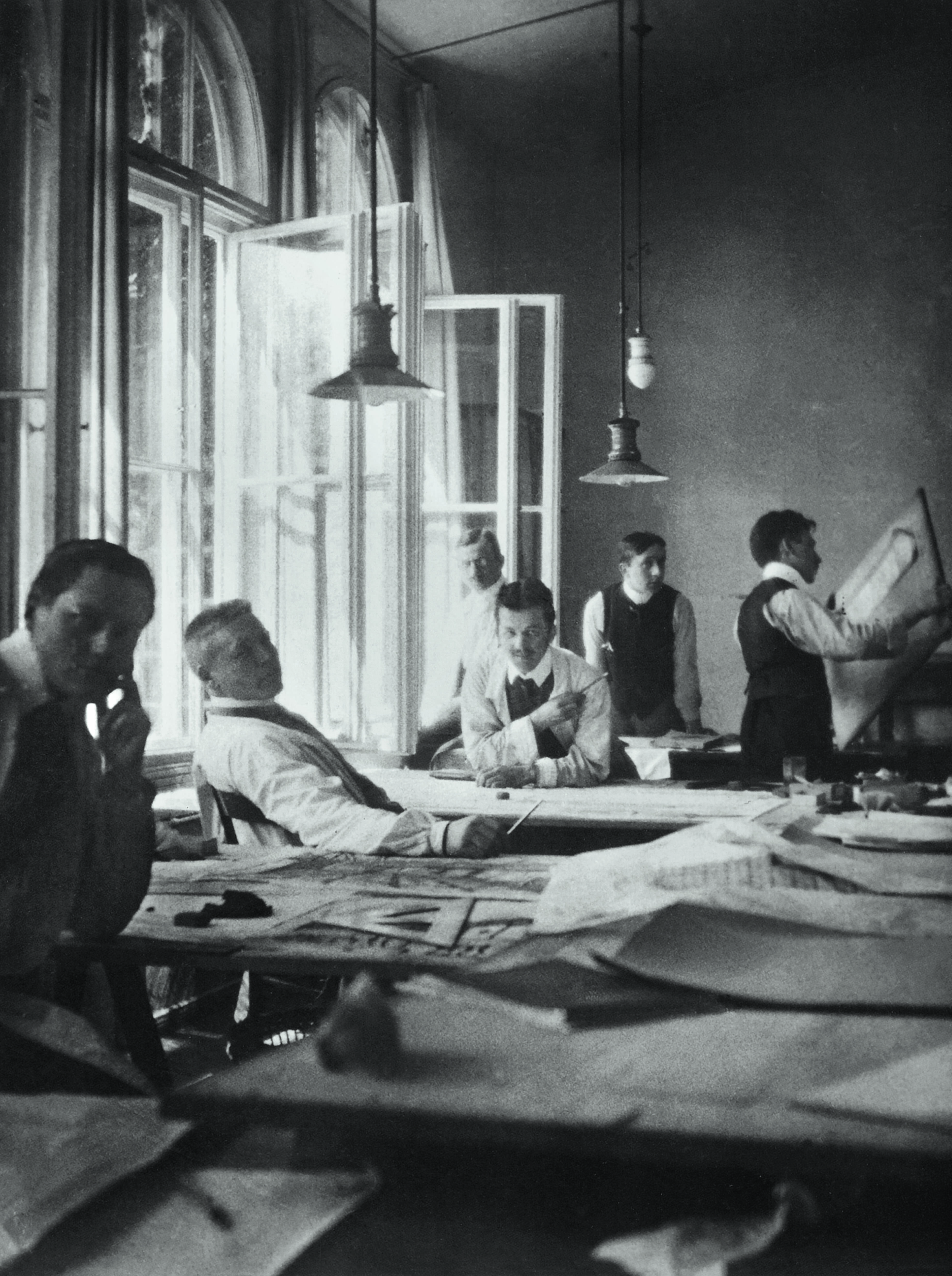
The modernist masters who helped Walter Gropius
Whether it was Klee, Kandinsky or Le Corbusier, the Bauhaus founder had a knack for attracting and sharing his life with other modernist greats
Walter Gropius led such a varied and prodigious life, it’s hard to believe his output was solely the work of one man. In the introduction to their new book, Walter Gropius: An Illustrated Life, authors Leyla Daybelge and Magnus Englund, describe the German polymath as “a protean figure – a modern Renaissance man – soldier, architect, industrial designer, educator, team leader, philosopher and romantic.”
Gropius was not only a modernist pioneer, he also founded perhaps the most famous modernist institution, the Bauhaus art school, which, as our new book explains, created “a new generation of graduates: multi-skilled men and women trained not in the old Beaux-Arts tradition but to take their place in the new technological world of the twentieth century.” Furthermore, he spread his ideas across the globe, particularly following Gropius’s emigration to the United States, where his graduate students at Harvard went on to promulgate the ‘International Style’ of architecture across the globe.
Yet, Gropius is also distinct among the great figures of modernism because, unlike many others, he was so often ready to share his ideas, projects and subsequent glory.
In one section, the book’s authors focus on a 1908 photograph (above), which “shows the young Gropius in the Berlin studio of his mentor, Peter Behrens, working alongside fellow apprentice Mies van der Rohe.
“Unlike his best-known contemporaries – Mies, Le Corbusier and Frank Lloyd Wright– throughout his career, Gropius preferred to work in a team – a habit that may originally have stemmed from his own shortcomings as a draftsman.”
Whatever personal drawbacks may have pressured Gropius to collaborate were more than compensated by his ability to find modernist masters to aid in his mission as a designer, educator and architect.
Gropius’s relationship with Behrens arose from a sort of gap year the young man took from his architectural studies in Madrid in 1907, spending an inheritance on paintings in the hope of becoming a successful art dealer. Though not wholly successful in this pursuit, Gropius did meet the German entrepreneur and art collector Karl Ernst Osthaus, who, in turn, suggested contact Behrens on returning to Germany.
“Gropius returned to Berlin in early 1908,” explains the book, and “following a successful interview, was offered a place in Behrens’ Babelsberg office near Potsdam.”
It was a fortuitous appointment. “Mies van der Rohe also joined the office in 1908 and the young Charles-Édouard Jeanneret, later known as Le Corbusier, was taken on between October 1910 and March 1911.”

Pages from Walter Gropius: An Illustrated Life
While these encounters were lucky, Gropius’s foresight in appointing colleagues to the Bauhaus, around a decade later, can only be viewed as a demonstration of remarkably good judgement.
In 1921, the Swiss-German abstract painter Paul Klee joined as a Master of Form in the bookbinding, stained-glass and mural-painting workshops,” explains our new book. “He was joined the following year by his friend, the fifty-six-year-old Russian artist Wassily Kandinsky, who became Master of Form in the wall- painting workshop and forged a formidable partnership with Klee. Oskar Schlemmer, painter and innovative ballet and theatre designer, led the wall-painting workshop, moving later to the new theatre workshop and was the genius behind the costumes at the monthly, themed Bauhaus parties. Painter Georg Muche, whom Gropius had known from Der Sturm in Berlin, ran the weaving and woodcarving workshops.”
Any school that appointed such a teaching body would surely already be certain of its place in history, yet Gropius managed to add László Moholy-Nagy, Anni and Josef Albers, and Marcel Breuer to its faculty – Breuer being one of the first Bauhaus students to join the teaching body.
It’s unclear how Gropius managed such a feat, though at the end of his life his friend, the Swiss architectural historian Sigfried Giedion, described what he saw as Gropius’s unique quality:
“He possesses a gift rarely owned by creative people; he is not enclosed within his own productive life as within a block of ice,” Giedion is quoted saying in our new book. “He can give ungrudging recognition to the work of others. He is sincerely interested in the achievements of his fellows and spares neither time or effort to stand up for them and their work.”

Walter Gropius: An Illustrated Life
To see more of that work, as well as more of Gropius’ own incredible achievements, order a copy of Walter Gropius: An Illustrated Life here.